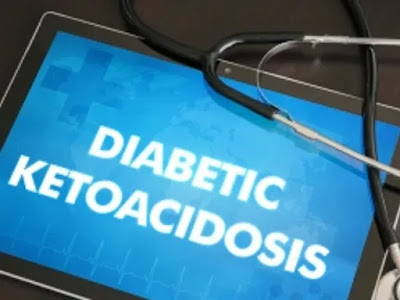Introduction

diabetes that can be life-threatening if not treated promptly. It
develops when the body's cells are deprived of glucose
they need for energy, leading to the breakdown of fat and the
release of ketones into the bloodstream. In this
comprehensive guide, we will explore what DKA is, its
symptoms, potential complications, treatment, and the timeline
for recovery.
What Is Ketoacidosis and Its Symptoms?

Ketoacidosis refers to a condition in which the body produces high levels of ketones, resulting in increased blood acidity. In the context of diabetes, this condition is often called diabetic ketoacidosis (DKA). The primary symptoms of DKA include:
Excessive Thirst and Frequent Urination: As blood sugar levels rise, the body tries to eliminate excess glucose through urination, leading to dehydration.
High Blood Sugar (Hyperglycemia): DKA is associated with markedly elevated blood sugar levels.
Fruity Breath Odor: The presence of ketones in the breath can cause a distinctive fruity or acetone-like odor.
Rapid Breathing: Known as Kussmaul breathing, it's a compensatory response to acidosis.
Nausea and Vomiting: Gastrointestinal symptoms are common in DKA.
Fatigue and Weakness: Energy imbalances result in fatigue and weakness.
What Can Ketoacidosis Cause?

Left untreated, ketoacidosis can lead to severe complications, including:
Dehydration: The body attempts to eliminate ketones through frequent urination, leading to dehydration, which can have cascading effects on various body systems.
Electrolyte Imbalance: Dehydration can disrupt the balance of essential electrolytes in the body, affecting the heart, muscles, and nerves.
Kidney Dysfunction: DKA can place significant stress on the kidneys, potentially leading to kidney damage.
Cardiovascular Issues: Elevated blood sugar and acidosis can affect the cardiovascular system, increasing the risk of heart-related complications.
Cerebral Edema: This is a rare but severe complication, especially in children with DKA, which involves swelling of the brain.
What Is Ketoacidosis and How Is It Treated?
DKA is a medical emergency that requires immediate attention. Treatment typically involves:
Fluid Replacement: To correct dehydration, fluids, and electrolytes are administered intravenously.
Insulin Therapy: Insulin is used to lower blood sugar levels and halt the production of ketones.

Correction of Electrolyte Imbalances: If necessary, electrolyte imbalances are addressed through intravenous supplementation.
Identification and Treatment of Underlying Causes: It's essential to identify and manage the factors contributing to DKA, such as infections or missed insulin doses.
Timeline for Recovery from DKA

The timeline for recovery from DKA can vary depending on several factors, including the severity of the condition, the individual's overall health, and how promptly treatment was initiated. Generally, individuals often start to respond positively to treatment within the first 24-48 hours. Symptoms such as excessive thirst, frequent urination, and rapid breathing typically improve during this period.
However, complete recovery may take several days to weeks, especially if there are severe complications or if DKA is a result of an underlying infection or illness. Monitoring blood sugar levels, electrolyte balance, and kidney function is critical during the recovery process to ensure a safe and successful return to stable health.
FAQ's
At What Blood Sugar Level Does Ketoacidosis Start?
Ketoacidosis, specifically DKA, can begin to develop when blood sugar levels are significantly elevated, typically above 250 mg/dL. However, it's crucial to understand that the onset and severity of DKA can vary among individuals, and the presence of other factors such as dehydration, infection, or missed insulin doses can contribute to its development. Thus, individuals with diabetes need to monitor their blood sugar levels regularly and seek prompt medical attention if they experience symptoms of DKA, even if their blood sugar levels are below 250 mg/dL.
Conclusion
In conclusion, diabetic ketoacidosis is a severe complication of diabetes that demands immediate medical attention. Understanding the symptoms, complications, treatment, and recovery process is essential for both individuals with diabetes and healthcare providers to ensure a safe and successful resolution of this potentially life-threatening condition.
